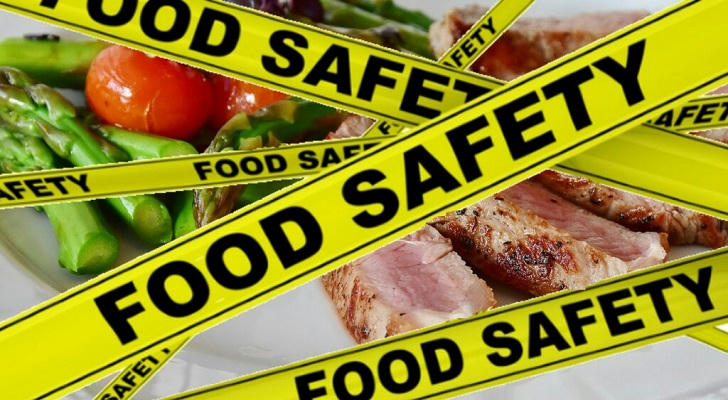How Can Parents Ensure Food Safety for Their Children in Schools?

In the United States, food safety in schools is a critical concern, especially for children. Parents play a vital role in supervising school meals and should be aware of the nutritional standards set by schools. They can guide their children towards healthy eating habits by discussing the importance of balanced meals, encouraging them to choose fruits and vegetables, and teaching them to read food labels.
Additionally, parents should actively participate in school meetings regarding food policies and advocate for healthier options in school cafeterias. By fostering an open dialogue about food choices and involving children in meal planning and preparation, parents can help instill lifelong healthy eating habits. Together, schools and families can create a supportive environment that prioritizes the health and well-being of children.
Monitoring Food Safety in Schools
Understanding Nutritional Standards: Parents should familiarize themselves with the nutritional guidelines established by the USDA and local school districts. This knowledge enables them to assess whether the meals provided meet the necessary health standards.
Regular Communication with Schools: Engaging in regular communication with school administrators and cafeteria staff can help parents stay informed about menu changes and food safety practices. Attending school board meetings or nutrition workshops can also provide valuable insights.
Encouraging Healthy Choices: Parents can encourage their children to make healthier food choices by discussing the benefits of various food groups. Emphasizing the importance of whole grains, lean proteins, and fresh produce can help children understand what constitutes a balanced meal.
What Parents Should Pay Attention To
Label Reading: Teaching children how to read food labels is essential. Parents should explain the significance of ingredients, serving sizes, and nutritional information, helping children make informed choices.
Food Allergies and Sensitivities: Parents must communicate any food allergies or sensitivities to school staff to ensure that their children are safe during meal times. This includes providing alternative meal options when necessary.
Meal Quality and Variety: Parents should monitor the quality and variety of meals served at school. If they notice a lack of nutritious options, they should voice their concerns to school officials.
Guiding Children Towards Healthy Eating Habits
Involvement in Meal Planning: Involving children in meal planning and preparation at home can foster a sense of responsibility and interest in healthy eating. Parents can encourage kids to help choose recipes and shop for ingredients.
Setting a Good Example: Children often mimic their parents' behaviors. By modeling healthy eating habits, such as consuming a variety of foods and maintaining portion control, parents can influence their children's dietary choices.
Creating a Positive Eating Environment: Establishing a positive atmosphere during meals, free from distractions like screens, can encourage mindful eating. Parents should promote family meals where everyone can share their thoughts about food and nutrition.
What Types of Foods or Snacks Are Recommended for Children to Eat Less of?
Here are some types of foods and snacks that children should eat less of or avoid altogether:
Sugary Drinks: Sodas, fruit juices with added sugars, and energy drinks can contribute to excessive sugar intake and obesity.
Candy and Sweets: Hard candies, gummy candies, and chocolate bars are high in sugar and provide little nutritional value.
Processed Snacks: Chips, pretzels, and other packaged snacks often contain unhealthy fats, high sodium levels, and preservatives.
Fast Food: Items like burgers, fries, and fried chicken are typically high in unhealthy fats, sugars, and calories.
Baked Goods: Cookies, cakes, and pastries are often loaded with sugar and unhealthy fats, making them less suitable for regular consumption.
Ice Cream and Frozen Desserts: These treats are high in sugar and fat, so they should be enjoyed in moderation.
Encouraging children to choose healthier alternatives, such as fruits, vegetables, whole grains, and nuts, can help promote better eating habits.

How Parents Can Supervise Schools and Food Producers
Parents supervise schools and food producers for children's dietary safety in the U.S. by advocating for food safety standards, participating in school nutrition programs, and educating their children about healthy eating practices. They can also engage with school boards and food producers to ensure compliance with safety regulations and promote transparency in food sourcing.
Advocating for Food Safety Standards: Parents can voice their concerns regarding food safety regulations and advocate for higher standards in school meal programs and food production.
Participating in School Nutrition Programs: Many schools have programs that allow parents to be involved in menu planning and food selection, ensuring that meals are nutritious and safe.
Engaging with School Boards and Food Producers: Parents can attend school board meetings to discuss food safety issues and collaborate with food producers to ensure they adhere to safety regulations.
Monitoring Food Sources: Parents can inquire about where school food is sourced from and ensure that it meets safety standards, including proper handling and preparation practices.
By taking these actions, parents can play an active role in ensuring that their children have access to safe and nutritious food in schools.
Conclusion
By actively monitoring food safety in schools, staying informed about nutritional standards, and guiding children towards healthy eating habits, parents can play a crucial role in ensuring their children's well-being. Collaboration between families and schools is essential in fostering a culture of health and nutrition that benefits all students.
